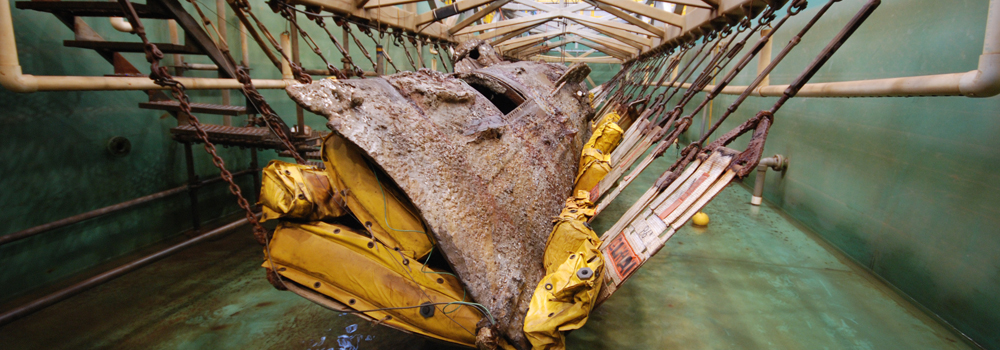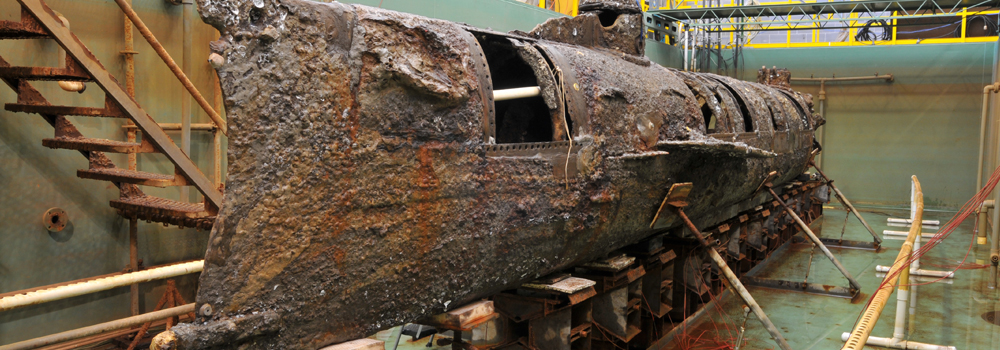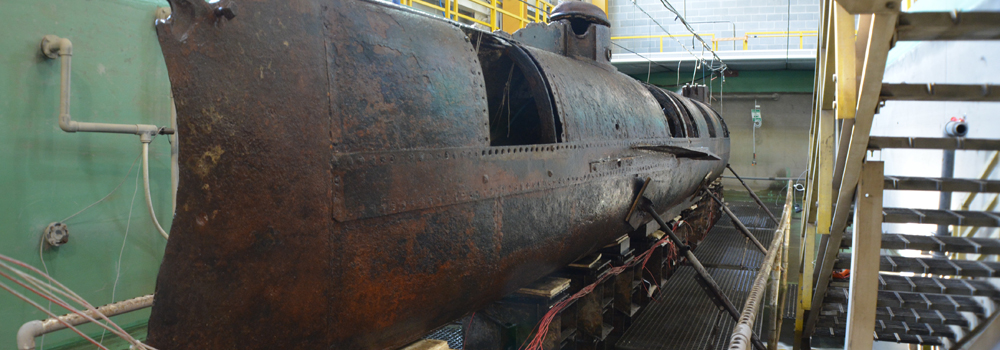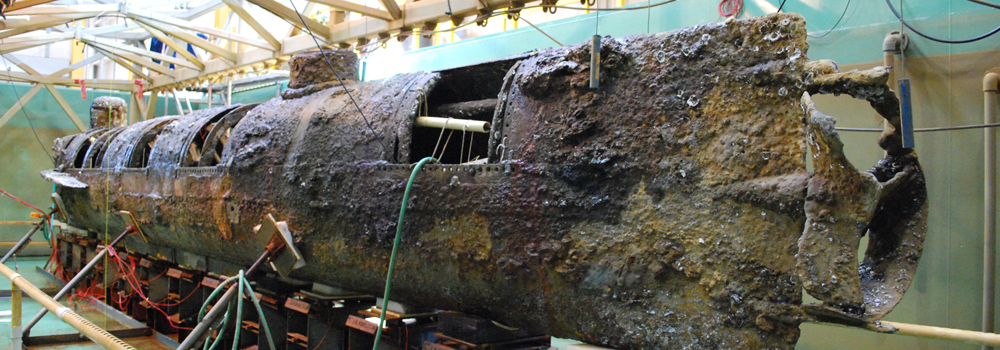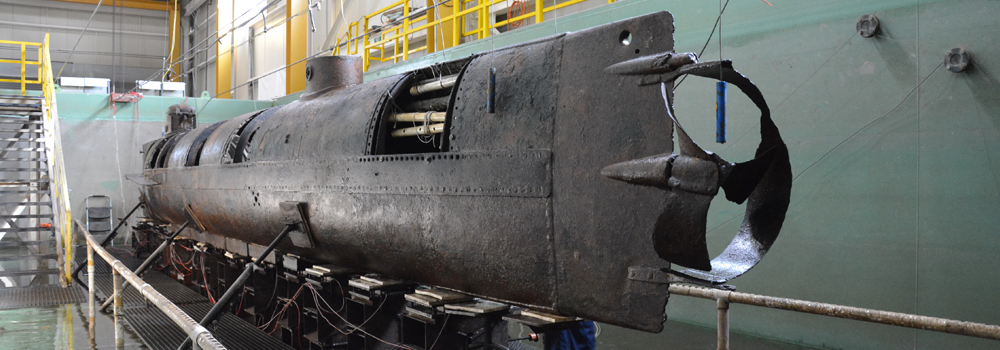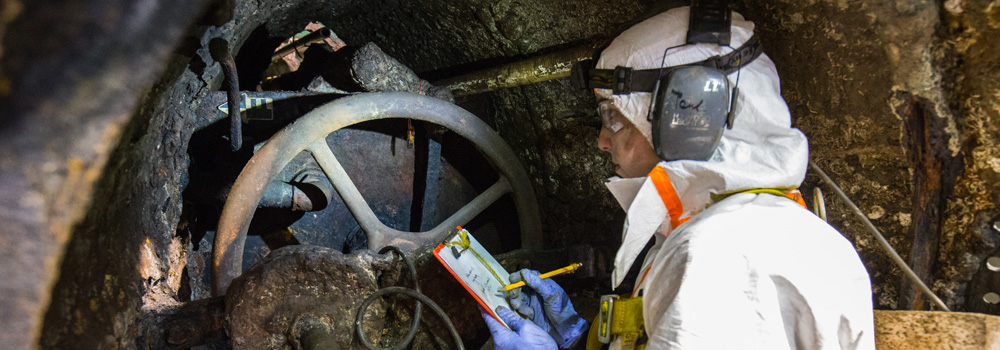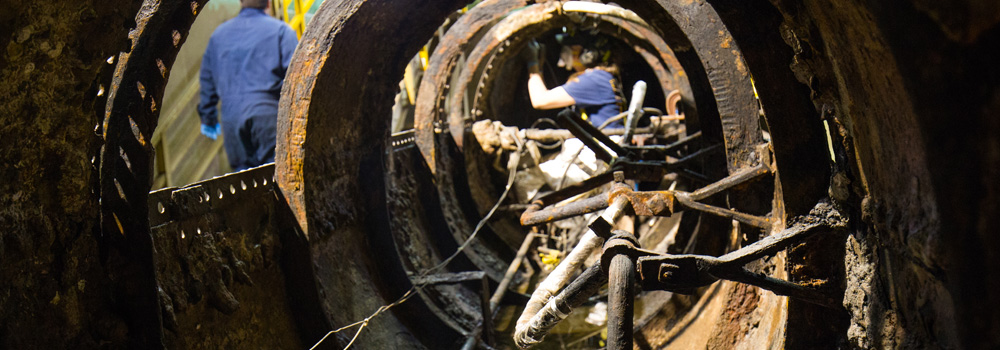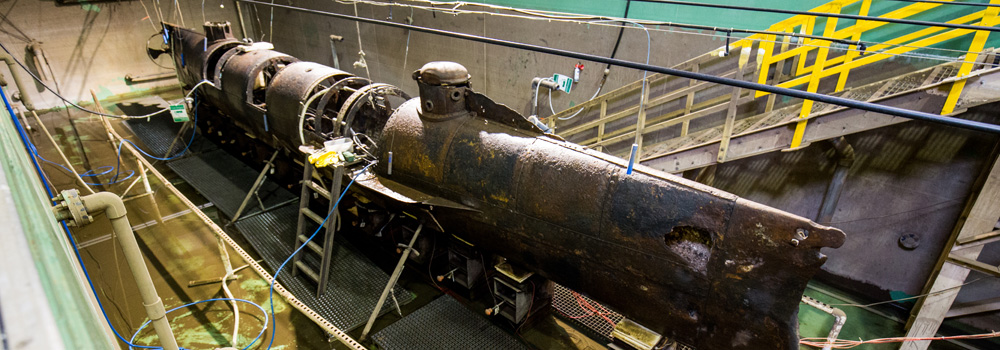H.L. Hunley
Conservation and Archaeological Study of the H. L. Hunley
The H.L. Hunley was the world’s first successful combat submarine.
In February 1864, the Hunley became the first submarine to sink an enemy ship in combat. That same night, the submarine was lost, until 1995, when the vessel was located resting at the bottom of Charleston harbor.
In August 2000, the Hunley was successfully raised through a partnership of the U.S. Navy, the Hunley Commission and Friends of the Hunley. The sub was then taken to the Warren Lasch Conservation Center.
Since 2000, excavation of the sub by Clemson scientists has uncovered more than 1,500 artifacts and the remains of all eight crewmembers. Scientists use advanced technology to preserve and document this national treasure for future generations.
Archaeologists use 3-dimensional technology to create a virtual site plan used for study and analysis. Conservators work with research scientists to develop revolutionary new techniques, such as subcritical extraction, to preserve historic iron.
While the Hunley project has already produced many new discoveries and led to the development of new technologies, Clemson scientists remain focused on continuing to conserve and document this historic wreck and its associated artifacts.
- Home
- About
- Teaching
- Equipment
- People
-
Projects
- NPS Metal Conservation
- CSS Alabama
- Drayton Hall Plantation
- Dorchester Bell Tower
- Pee Dee Cannons
- El Purgatorio
- Harriet Aiken
- Linear B Tablets
- South Adgers Wharf
- Waterlogged Archaeological Corks
- H.L. Hunley
- Pompion Hill
- Hobcaw Barony
- Sheldon Church
- Chicora
- USS Maine Gun
- Cooper River Canoe
- Creamware Castor
- CWS Early 20th Century Water Pipe
- Colonial Ceramic Vessel Retreatment
- Wooden Figurine Conservation
- Berkeley County Museum Cannon
- H.L. Hunley Digital
- NPS Fort Pulaski
- City of Charleston Guns
- Services
- Request Services
- Internship Opportunities
- News
- Resources
- Contact Us
- Emergency Preparedness


